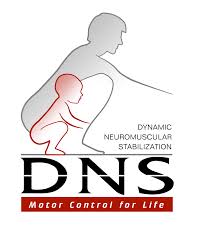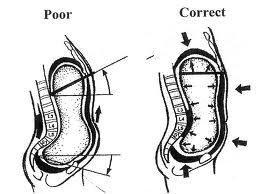The Bench Press is possibly the most popular exercise in the gym world. It is commonly know to train your chest and triceps, and nearly always done on a monday. Common pain associated with benching is shoulder and wrist. People that currently have back pain will also feel this pain in their lower backs (no kidding). But what if you didn't need to feel all this pain? The fix is rather simple, but will take a little effort on your part. All of this pain could be avoided with a little deeper understanding of joint positioning and joint centration. For the sake of time, I will be specifically addressing the issue of lower back pain during the bench press.

This should be you when you lift!
In a previous article, I wrote that the proper bench press technique requires you to arch at your lower back, I said benching with your feet up was useless, and I think I even poked fun at people that do. I’m going to eat my words and say none of that is true. When that article was written, I was on a mission to bench 450. The mission stopped at 445. Why? because I was beginning to deal with lower back pain and just had my mind blown at a DNS workshop in San Jose. I was the laughing stock of all the instructors because of the extension in my lower back that I fell into with every movement I did! This resulted in opening and scissoring of my lumbar spine and pain under load.

With all the laughing aside, the course instructors knew I had lower back pain, and urged me to fix it before the pain got worse. Ladies and Gents, I’m in training for the long haul. I can swallow my ego, put things behind me, and head to the drawing board! Within a week, I went from hitting 445 for a single, to 275 for sets of 5. A huge drop, the ego hurt, but the back pain was gone, and I am now training just as hard as before, pain free.
So what was the difference? Dynamic Neuromuscular Stabilization. DNS taught me a greater understanding of proper breathing, proper intra abdominal pressure, the 3 month position (which has single handily saved my spine and many of my clients'), and an understanding of movement that has changed my brain.

So let’s talk about breathing
Proper breathing is also called belly breathing. Great, nothing new there, right? Wrong, keep reading. We as a society want to be skinny. In order to be skinny, we keep the musculature that is considered part of the core contracted. Doing this forces us to breathe into our ribs. Every breath into your ribs changes the positioning of your ribs, forcing you to extend your lumbar spine. This, in turn, forces you to elevate your humeral head, decentrating your glenohumeral joint (shoulder) ultimately inhibiting co-activation within your entire shoulder capsule, and the surrounding musculature. This will not only limit the amount of load you can handle on the bar, but also increase the stress and strain on the supporting structures.

I bet ya didn’t know breathing was that important huh!
But wait, it doesn’t end there.
Now think about low back pain. In order for you to breathe into your ribs you have to maintain a slight lordosis of your lumbar spine. In other words, the excessive extension of your back is only feeding into your dysfunction. When you breath into your ribs while you bench, you only place a greater strain on your spine. Couple that with decentration of your shoulders, and your having a great day. It’s no wonder, you get excited benching 225 on Mondays.
Correcting your Breathing
This is fairly easy to fix, the ease of correction depends on the individual. The easiest way to explain and correct your breathing is to lay on your stomach with knees bent and feet on the floor. Place your right hand on your stomach, left hand on your chest, and take breaths so only the right hand on your belly is moving. As hard as this feels and as unnatatural as it feels, it is natural! Watch a baby, who has been untainted by today’s sedentary lifestyles, I guarantee every breath is into its belly.
Work on this every day until it becomes your natural breathing pattern. My favorite thing is for an athlete to walk in really excited, simply because they are now breathing through their bellies without even thinking about it. It’s the first and most important goal at restoring function!
Applying PROPER Intra-abdominal Pressure
Once we restablish breathing, you can move to Intra abdominal pressure. IAP is something you have to feel for, and can only feel when you can breathe into your belly. Creating good IAP creates the ideal anchor for your joints, and creates a load of stability through your spine, ultimately allowing force to be transferred efficiently through your body. The more stabile your spine is while benching and lifting, the more efficiently you will be able to deliver force into the bar. This allows all the force to be directed towards your lift, instead of allowing it escape into other joints that are not meant to deal with that sort of load.
Before you can apply proper IAP with each rep, you have to know what it feels like. To do this, lay on your back with your head 8 inches from the wall. Place your hands completely flat on the wall. The easiest position to feel this is in the 3 month position. 3 months looks like 90 degrees of hip, knee, and ankle flexion. Once in the position, take a deep breath into your stomach and press your hand hard into the wall. The moment you press into the wall, you would feel this weird tension through your belly. What you feel in your diaphragm and pelvic floor compressing the air within you abdomen. Remember it, commit it to memory, and apply it to your training. When you get it down, you can feel how it can support your spine.
To do this when you bench, simply set your spine, take a breath, and press your hands into the bench or squat rack. Try to push yourself away from the bar just like you were pressing your hands into the wall. In order to keep the pressure, you have to be able to maintain good positioning of your spine through every rep. if you escape into extension through your lower back, you will no longer be able to maintain the same pressure.
Owning The 3 Month Position
The 3 month position comes straight from DNS. DNS defines its positions by the month in which a baby spends in the specific position. The 3 month position is lying supine, with an elongated spine, making sure the lumbar and cervical spine are flat, chin pulled down, looking towards your sternum, and 90 degrees of hip, knee, and ankle flexion. All of my athletes know this position very well, and at first truly hate it. But once they understand it, own it, and feel/see the benefit, then their moods always change.

This position has been a powerful tool for my navy guys because many of them suffer from lower back pain. When I say all, I truly mean ALL. Placing them in this position immediately eliminates lower back pain, if the pain is due to the excessive extension and open scissoring, which for most people it is.
Applying the 3 month position to the bench press, on top of implementing it into other exercises, has saved my lower back, and eliminated all pain.
If part of your issue is a lack of stability through your hips, grab a band, place it around your knees, and keep it forcefully pressed out during every rep. Again athletes are shocked at how stability through their hips instantly improves stability through their upper body. This immediately impacts their ability to move weight on the bar.
With that being said, you will always see some knucklehead benching with his feet up, not truly understanding what he or she is doing. Their train of thought 99.999999% of the time is…I’m isolating my chest, or I’m training my core. Both sort of make sense, but the position holds so much power than they realize!
Thats All folks
In conclusion, if you have lower back pain when you bench, and want to keep benching while improving your lower back dysfunction, follow these steps…
- Learn how to breathe properly into your belly. Right hand on your belly, left hand on your chest, and try to only let your right hand move.
- Establish and own the feeling of proper IAP. This will give you greater stability along your spine
- Start benching in the 3 month position!
Now, these suggestions are based on my own experience, and the success I’ve had with clients. Don’t half ass any of the steps. If you can’t breathe properly, you won’t be able to create proper IAP. If you can’t create proper IAP, you will be flopping all around on the bench in the 3 month position, and no one wants to be the person who falls off the bench. That’s just as bad as fall off the treadmill because you’re checking out the person next to you!

